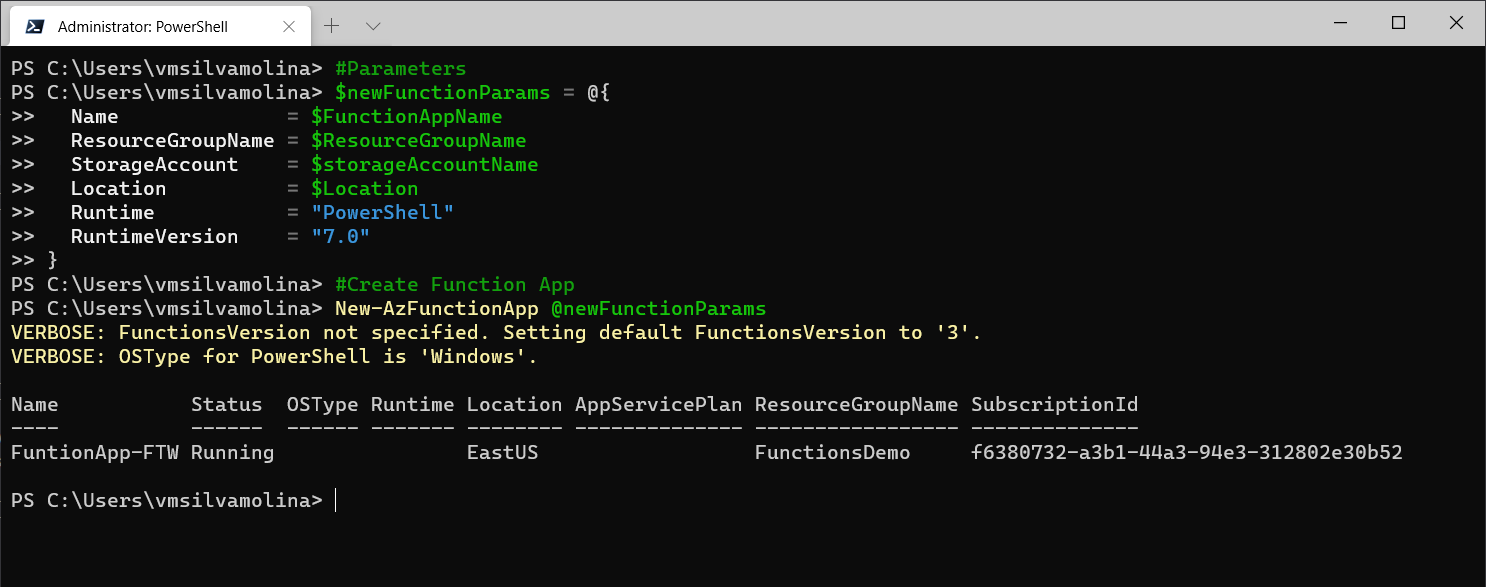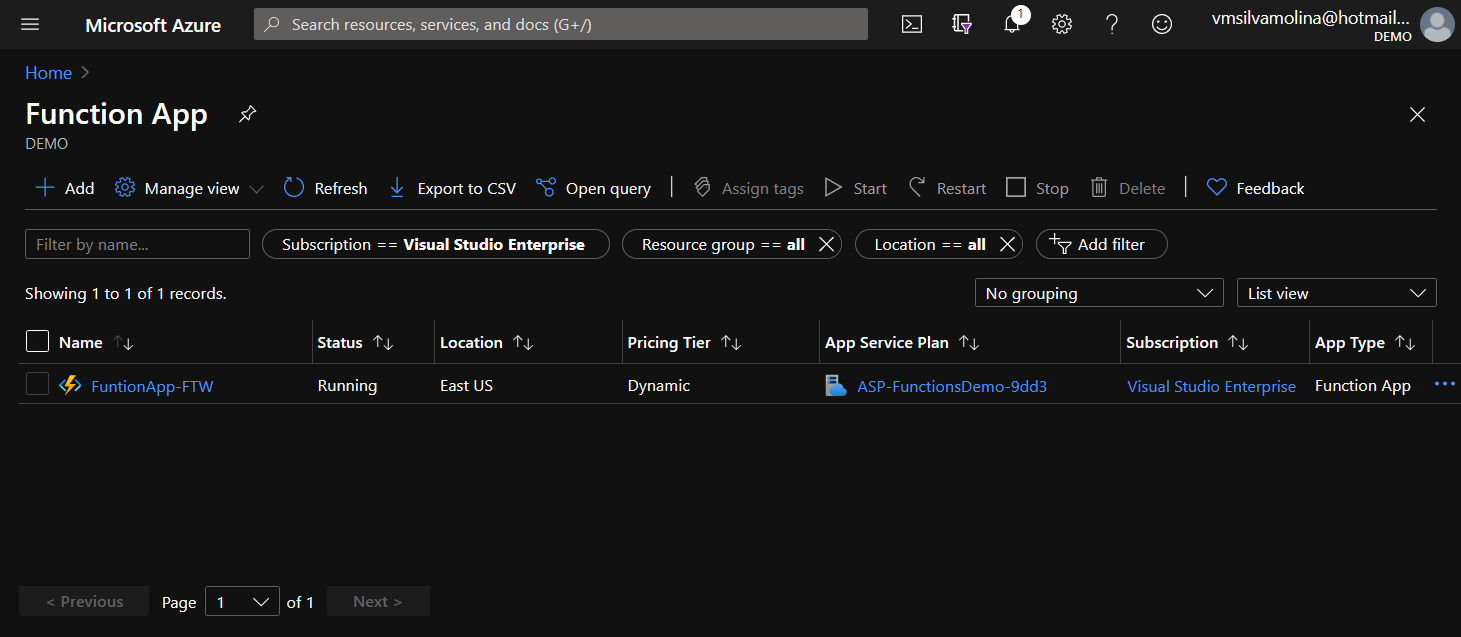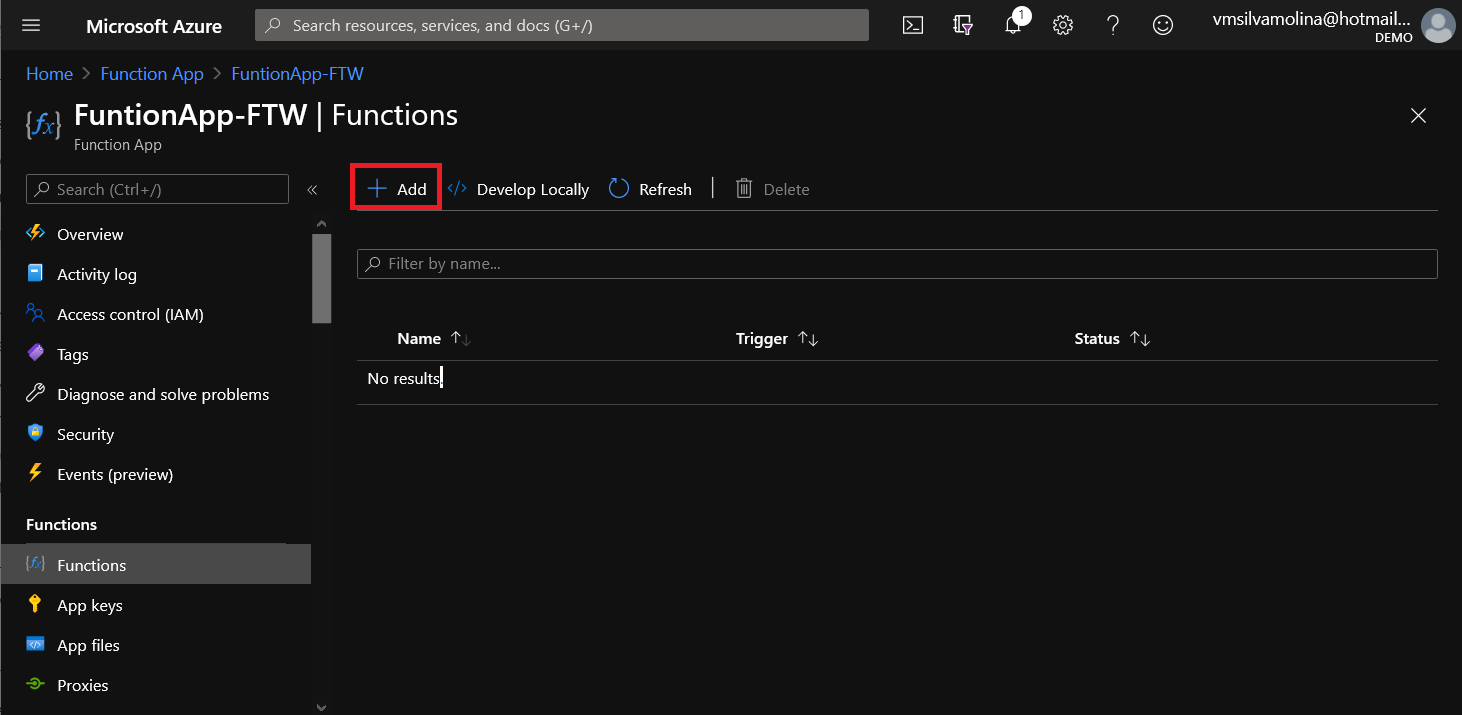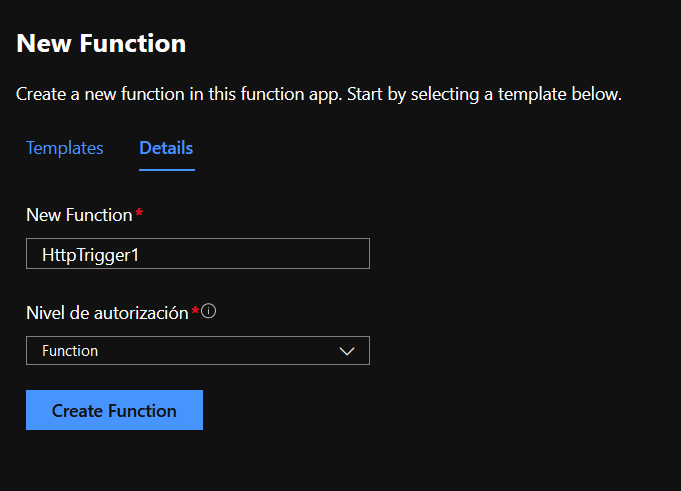Azure Functions with PowerShell: Swiss army knife for Ops [English]
Azure PowerShell
Nowadays, infrastructure tasks have reached a new level with the help of devs tools (like control version system) but, operations teams take all of the advantages of ‘new world’? Serverless computing enables ways to build and create applications without concern about managing the infrastructure.
With Azure Functions, you can write code with PowerShell, Python, C#, Java, and Javascript to publish these blocks of code as functions. Those functions are hosted in Azure in a container called a Function App. How does it work? Functions run when they are “triggered” and you’ll see that in action in this post-guide. Though functions can run for a longer time under the premium and app service plans, the ultimate purpose of a function should be to do a particular task and do that task as efficiently as possible.
How will Azure Functions help with daily tasks or automate the “boring stuff”? In previous lines I quoted that two of the most popular scripting languages such as PowerShell and Python are available to use and… Did I mention that there is a free plan (with limitations obviously)? Functions created for default use the Consumption plan as a hosting plan when billing is based on the number of function executions, execution time, and memory used. In other words, you only pay for the time your functions are running.
First step: Create a Function App
We can create an Azure Function App using the Azure Portal selecting PowerShell as the runtime. On the other hand, we can use PowerShell.
Az.Functions is the module relased at the PowerShell Gallery for Microsoft to provide cmdlets to manage Azure Functions.
As I explained here, to install the module you need to run:
Install-Module Az.FunctionsThe following is connect to Azure:
#Connect to Azure
Connect-AzAccount
#Select the subscription
Select-AzSubscription xxxI’ll use an existing Resource Group but I need to create the Storage Account running the following:
#Variables
$ResourceGroupName = "FunctionsDemo"
$FunctionAppName = "FuntionApp-FTW"
$Location = "EastUS"
$guidPart = (New-Guid).ToString().Split('-')[0]
$storageAccountName = "functionapp$guidPart"
$storageSku = "Standard_LRS"Azure Functions need a storage account to work correctly. Because storage accounts use a globally unique name, we’ll take a section of a GUID and append it to the storage account name.
#Parameters
$newStorageParams = @{
ResourceGroupName = $ResourceGroupName
AccountName = $storageAccountName
Location = $Location
SkuName = $storageSku
}
#Create storage account
New-AzStorageAccount @newStorageParamsLastly, we can use the New-AzFunctionApp to deploy the function app:
#Parameters
$newFunctionParams = @{
Name = $FunctionAppName
ResourceGroupName = $ResourceGroupName
StorageAccount = $storageAccountName
Location = $Location
Runtime = "PowerShell"
RuntimeVersion = "7.0"
}
#Create Function App
New-AzFunctionApp @newFunctionParams
Perfect! In the Azure portal inside Function App now we see:

Deploy the function
After the above steps, now we create a function: the Hello World function, why not?
In the Function App (FuntionApp-FTW), select Functions, and then select + Add:

For this example, we use the HTTP trigger template. Select that and Create Function.

Inside the function, selecting the Code + Test option, we can access to the code and tools for troubleshoot and test the function.
What kind of problems can it solve?
At this moment, we start to solve some challenges/problems associated with commom requirements or daily tasks, like scheduled actions, with Azure Functions and Azure Services.
Scenario 1 - Read web content for updates
Suppose that I have to check the Azure Stack Hub release notes for new updates. The site is: https://docs.microsoft.com/en-us/azure-stack/operator/release-notes and we need to pay attention to the build reference and build type, because if we had a new version we should receive a mail with the number and the type (full or express):

This function must be executed periodically since it is necessary to check for new updates of the site regularly. Therefore, the function has to Timer trigger (another type of function that runs periodically).
When we create a Timer trigger function, we need to define a schedule, like a cron expression:
0 0 13 * * *
What does it mean: Run every day at 13:00hs UTC.
How do we obtain the information indicated on the image before? With PowerShell and the following code:
$web = Invoke-WebRequest -Uri https://docs.microsoft.com/en-us/azure-stack/operator/release-notes -UseBasicParsing
$buildReferenceRaw = ($web.Content `
| Select-String -AllMatches -Pattern '(\<h2.*\>)(.*)( build.*\<\/h2\>)' `
| Select-Object -ExpandProperty Matches)
$buildReference = $buildReferenceRaw[0].Groups[2].Value
$updateTypeRaw = ($web.Content `
| Select-String -AllMatches -Pattern '(The Azure Stack Hub .* update build type is <strong>)(.*)<\/strong>.' `
| Select-Object -ExpandProperty Matches)
$updateType = $updateTypeRaw[0].Groups[2].ValueNow we need to paste this code into the function, using the code editor embedded.
Ok, now we have the values and it’s time to create a message to join the info. We’ll test the function using the
Write-Host "New update! The last update is ${$updateNumber} and the build type is ${$updateType}."
Perfect! An improving for that is read the previous value from a
Awesome! The next step is to send an email with that info using for example SendGrid (an SMTP solution offered in the Azure marketplace, with a free tier), but that will part of a new post ;)
Happy scripting!